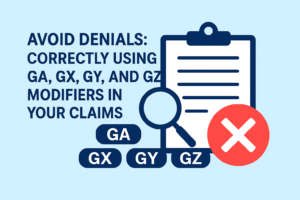Anemia is a disease that is increasing in the population day by day. Anemia occurs due to lower blood cells or the available red blood cells in your body stop functioning properly. There are different types of anemia as some people get affected by anemia due to blood loss and some face iron-deficiency anemia. Only in the US, iron-deficiency anemia in men under 50 is 1% and 10% of women of childbearing are affected by this disease while 9% of children at the age of 12 to 36 months are surviving from iron deficiency. More than 3 million people in the US face some kind of anemia.
With the increase of this disease, the billing needs also increase. For the coding of anemia, different ICD-10 codes are utilized. For accurate billing, this ICD-10 code must be accurate. And for accurate coding, you just need to know all the ICD-10 codes for anemia. So let’s see all ICD-10 codes for anemia due to blood loss and iron deficiency so you don’t need to go anywhere else.
What is Anemia?
Anemia happens when your blood doesn’t have enough healthy red blood cells or hemoglobin to carry oxygen efficiently throughout the body. Iron deficiency anemia is caused when your body does not have enough amount of iron that helps to produce hemoglobin, a protein in red blood cells responsible for carrying oxygen from the lungs to the rest of the body. Anemia can be caused due to blood loss. Anemia can be caused due to various reasons like iron deficiency, chronic diseases, acute blood loss, vitamin B12 deficiency, and more. As a result, people face fatigue, weakness, dizziness, and shortness of breath. And each of those causes points us to a different ICD-10 code.
Symptoms of Anemia
There are different symptoms of anemia. These include:
Fatigue and Weakness: The most common symptoms that show your body doesn’t have enough healthy red blood cells to carry oxygen. Even simple tasks like climbing stairs or walking become difficult.
Pale or Yellowish Skin: If someone looks unusually pale or has a slightly yellow tint to their skin or eyes then it could be anemia.
Shortness of Breath: Getting winded after minimal activity? That’s a sign your body is struggling to deliver enough oxygen to your muscles and organs.
Dizziness or Lightheadedness: When your brain isn’t getting enough oxygen, you might feel dizzy or like you’re about to faint especially when standing up too quickly.
Cold Hands and Feet: Poor circulation from low red blood cell count can leave your hands and feet feeling chilly even if the rest of you feel fine.
Chest Pain or Irregular Heartbeat: Sometimes your heart works overtime to pump more oxygen-rich blood throughout the body. This can lead to palpitations, irregular heart rhythms, or even chest pain.
Headaches: Oxygen deprivation can also affect your brain and lead to frequent or persistent headaches.
Brittle Nails or Hair Loss: Anemia can affect how nutrients are delivered to your skin and nails. Your nails will break easily or your hair seems to be thinning more than usual.
Why ICD-10 Coding for Anemia Matters
If you’re in the healthcare or billing space then coding is more than just paperwork. It’s how services get paid, how conditions are tracked, and how patient care gets documented. ICD-10 is a standardized coding system used by healthcare professionals to classify and code different diseases, conditions, and medical processes. Each medical condition is assigned a unique alphanumeric code that provides specific information about the diagnosis. For the disease of anemia, different codes are utilized and are important for effective treatment and management. An incorrect anemia code can lead to claim denials, payment delays, or miscommunication about the patient’s actual condition.
Anemia Codes in ICD-10
Most anemia ICD-10 codes fall under the D50–D64 block. Let’s see the most commonly used ones, especially the types you’ll see regularly in outpatient clinics, hospitals, and even urgent care centers.
D50 – Iron deficiency anemia
- D50.0 – Iron deficiency anemia secondary to blood loss (chronic)
- D50.1 – Sideropenic dysphagia
- D50.8 – Other iron deficiency anemias
- D50.9 – Iron deficiency anemia, unspecified
D51 – Vitamin B12 deficiency anemia
- D51.0 – Vitamin B12 deficiency anemia due to intrinsic factor deficiency (aka pernicious anemia)
- D51.1 – Vitamin B12 deficiency anemia due to selective vitamin B12 malabsorption with proteinuria
- D51.2 – Transcobalamin II deficiency
- D51.3 – Other dietary vitamin B12 deficiency anemia
- D51.8 – Other vitamin B12 deficiency anemias
- D51.9 – Vitamin B12 deficiency anemia, unspecified
D52 – Folate deficiency anemia
- D52.0 – Dietary folate deficiency anemia
- D52.1 – Drug-induced folate deficiency anemia
- D52.8 – Other folate deficiency anemias
- D52.9 – Folate deficiency anemia, unspecified
D53 – Other nutritional anemias
- D53.0 – Protein deficiency anemia
- D53.1 – Other megaloblastic anemias, not elsewhere classified
- D53.8 – Other specified nutritional anemias
- D53.9 – Nutritional anemia, unspecified
D55–D59 – Hemolytic anemias
- D55 – Anemia Due to Enzyme Disorders
- D56 – Thalassemia
- D57 – Sickle-Cell Disorders
- D58 – Other Hereditary Hemolytic Anemias
- D59 – Acquired Hemolytic Anemias
D60–D64 – Aplastic and other anemias
D60 – Acquired Pure Red Cell Aplasia
D61 – Other Aplastic Anemias
- D61.0 – Constitutional aplastic anemia (includes Fanconi anemia)
- D61.1 – Drug-induced aplastic anemia
- D61.2 – Aplastic anemia due to other external agents
- D61.3 – Idiopathic aplastic anemia (unknown cause)
- D61.8 – Other specified aplastic anemias
- D61.9 – Aplastic anemia, unspecified
- D62 – Acute posthemorrhagic anemia
D62 – Acute Posthemorrhagic Anemia
D63 – Anemia in chronic diseases classified elsewhere
- D63.0 – Anemia in neoplastic disease (cancer-related anemia)
- D63.1 – Anemia in chronic kidney disease (CKD)
- D63.8 – Anemia in other chronic diseases classified elsewhere
D64 – Other Anemias
- D64.0 – Hereditary sideroblastic anemia
- D64.1 – Secondary sideroblastic anemia due to disease, drugs, or toxins
- D64.2 – Sideroblastic anemia, unspecified
- D64.3 – Other aplastic anemias
- D64.4 – Congenital dyserythropoietic anemia
- D64.8 – Other specified anemias
- D64.81 – Anemia due to antineoplastic chemotherapy
- D64.89 – Other specified anemias (catch-all for unusual types)
- D64.9 – Anemia, unspecified
Z86 – Personal history of certain other diseases
Z86.2 – Personal history of diseases of the blood and blood-forming organs and certain disorders involving the immune mechanism
Diagnosing Iron Deficiency Anemia
To diagnose anemia, healthcare providers prescribe different medical tests and evaluations. The ICD 10 code plays an important role in documenting the diagnosis. Physicians can use different methods like blood tests to measure hemoglobin and ferritin levels to confirm the current condition of a patient. Then according to the patient’s situation, providers prescribe different medications as well as dietary changes and supplements.
Tips for Getting Your Anemia Coding Right
Anemia coding can be confusing for coders to use. So here are some of the useful tips that help you stay on track:
- Get Specific – If you can identify the cause like iron deficiency, blood loss, or chronic illness then go with the most specific code.
- Use Lab Data – Hemoglobin, hematocrit, ferritin, B12, and folate levels all help justify your code.
- Check the Chart – Look for things about chronic conditions, dietary habits, medications, or recent surgeries.
- Don’t Default to Unspecified – It’s dangerous to insurers and makes follow-up care more confusing.
Final Thoughts
Anemia is a situation that needs proper attention, especially in coding. Between iron deficiency, B12 problems, chronic diseases, and acute blood loss, there are lots of codes and it is critical to use the right one. Whether you’re an expert biller, a provider documenting diagnosis, or just someone enhancing skills on ICD-10, one thing’s clear: the better we understand how anemia works in the coding world, the better care and accuracy we can provide to the patients on the front lines.
If you can’t manage all these billing complications individually then you can outsource your billing operation to M&M Claims Care medical billing company. Our experience shows our accuracy in each process and you’ll see the results in your revenue cycle management.






